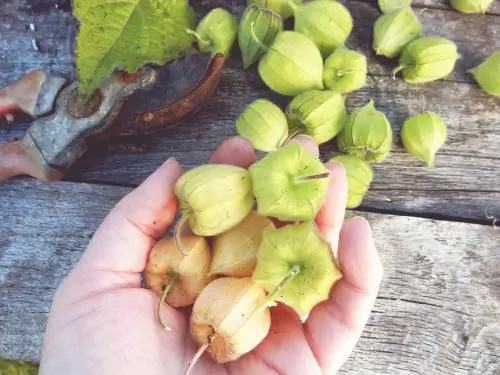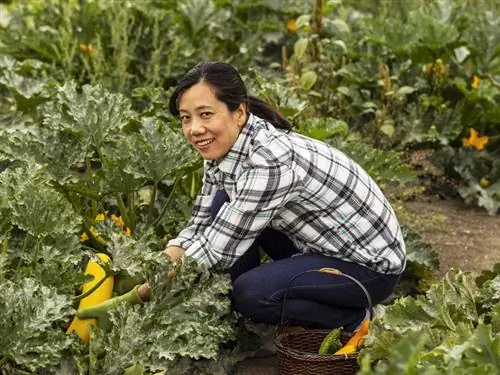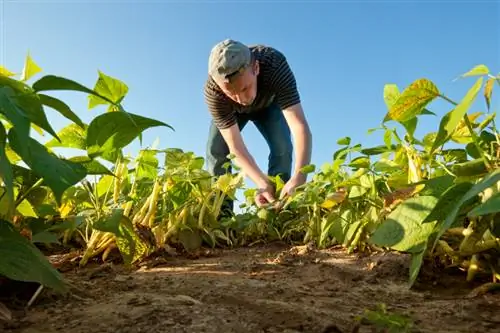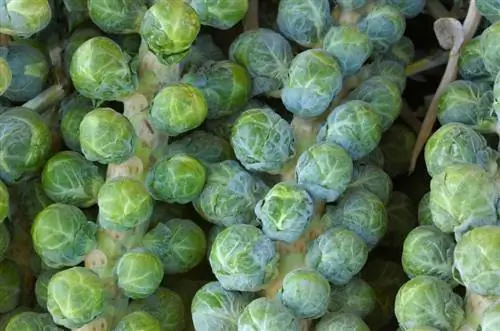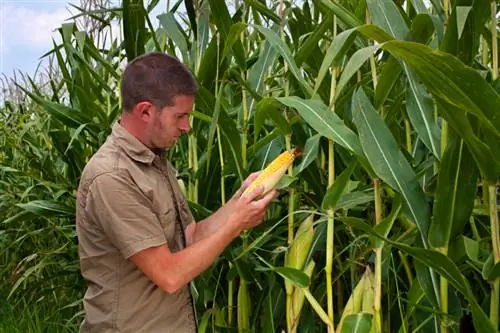- Author admin [email protected].
- Public 2023-12-16 16:46.
- Last modified 2025-01-23 11:20.
The round, striking orange-yellow physalis (or, more correctly, Andean berries or Cape gooseberries) packed in a natural straw-like shell are available in the supermarket almost all year round. For several years now, the plants have also been increasingly grown in German gardens; after all, they are easy to care for and produce lots of delicious, he althy fruits. But when can you actually harvest the berries? Here are our tips on the topic.
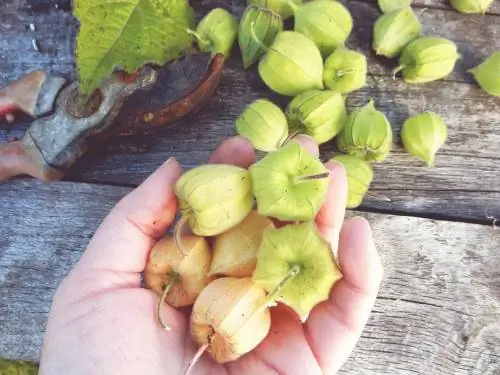
When and how do I know that physalis are ready to harvest?
Physalis can be harvested in Germany between August and September. You can recognize ripe fruits by the dried, brown shell and the strong orange-yellow or orange-red color of the berry. Unripe fruits are green and can lead to symptoms of poisoning.
Physalis ripen late in Germany
If you also want to grow Physalis, then you should sow the plants very early in the year - in March at the latest. The bush only produces fruit three to four months after sowing - this means that even with this early sowing you won't be able to harvest until August, but more likely in September. The Physalis comes from the subtropics and is therefore used to a much longer growing season than is usual in Central Europe. Assuming appropriate care, you can expect around 300 fruits per plant.
How do I recognize ripe Physalis?
You can recognize unripe physalis because they are more or less green. However, the berries are ripe when
- the shell dries up and turns brown
- it feels a little like dry paper
- and becomes more crumbly the riper the fruit is
- the berry itself turns a strong orange-yellow or orange-red
Physalis should be eaten as ripe as possible. On the one hand, unripe berries are not particularly tasty, but on the other hand, if too much of them is eaten, they can lead to symptoms of poisoning. By the way, in contrast to the other Physalis species, you can also harvest the fruits of the Tomatillo green and process them like vegetables.
How are Physalis harvested?
Many gardeners swear that physalis are only ripe when they fall off the bush on their own. But you have to like that. Instead, you can simply test a fruit to see whether it is actually ripe. The cover provides good information in the assessment, and the strong color shimmers through. If the berries are ripe, you can simply pick them off. You should remove the casing before consumption, but washing off the sticky layer is not absolutely necessary. Fruits harvested unripe do not ripen.
Some suggestions for further processing
If you don't have any ideas about what you can do with your Physalis harvest, here are some suggestions:
- Cooking jam
- Cooking fruit sauces or chutneys
- freeze or dry ripe fruits
- conjure up a delicious Physalis ice cream with sugar, honey and cream
Tip
Even in the cool winter quarters, green fruits often continue to ripen, so that you can also use Physalis fresh from the bush in the cold season. By the way, the berries of the lantern flower, which is widespread in this country, are confusingly similar to a commercially available physalis, but are still poisonous.

